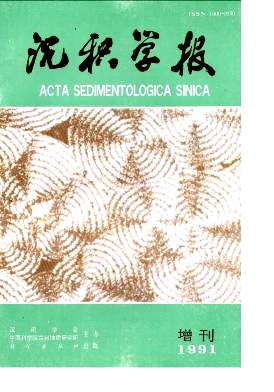A Preliminary Study on Organic Inclusions as Indicators for Oil/ Gas Potential Assessment in the Region of Carbonate Rocks
- Publish Date: 1991-12-31
Abstract: Either in the primary or the second migration stages, hydrocarbons could be trapped as organic inclusions, which are the direct indicators of abundance, evolution and migration of oil/gas, so long as crystallization or recrystallization takes place in the sediments. Based on the comparative studies of organic inclusions in industrial reservoir beds, oil/gas show beds and non-oil/ gas beds in carbonate rocks in China, many inclusion indices for oil/ gas potential assessment are preliminarily concluded as follows: Types and characteristics of organic inclusions: In industrial oil reservoir beds, pure liquid hydrocarbons or liquid hydrocarbons with minor gas hydrocarbons dominate in organic inclusions, liquid phase could be over 60% in inclusion volume, their colours are mostly yellow or yellowish brown with bright yellow, yellow or brownish yellow fluorescence. It must be under -140℃ while cooling if they get frozen; while in industrial gas reservoir beds, pure gas hydrocarbons or gas hydrocarbons dominate the oragnic inclusions, and gas phase can be over 80% in inclusion volume, the inclusions are mostly near round with grey black colour. The main compositions are shown by cooling to be methane with no fluorescence or liquid hydrocarbons with dark blue fluorescence. Numbers of organic inclusions: The relative abundance of organic inclusions and the saline water inclusions of the corresponding period may indicate the content of hydrocarbons in the ore-bearing fluids. According to the statistical results, the number of organic inclusion in industrial oil/gas reservoir beds are 2-3 times more than that in oil/gas show beds and over 4 times more than that in non-oil/gas beds. Palaeotemperature of inclusions: The process in which hydrocarbons are released from oil-generating rocks and accumulated into the oil/gas reservoirs is related directly to the temperature. Based on the results from actual measruements, the palaeotemperature of industrial gas reservoir beds are mainly 150℃ - 250℃, in comparison with 97-161℃ in industrial oil-reservoir and 61-110℃ in immature or low mature oil beds. Composition of inclusions: The composition of inclusions may present the primary contents of ore-bearing fluids. The main gas composition of inclusions, the contents, ratios, redox parameters or humidity etc. of organic gases are all excellent indices for their own peculiarity and characteristics. For instance, C1/C2 of inclusions from industrial oil beds is 2-10, humidity is over 20, redox parameter is 0.5-1.0; while C1/C2 of inclusions from industrial gas reservoir beds is 10-35, humidity is less than 10, and redox parameter is over 1.0. The above-mentioned indices were used to assess the oil/gas potentials of the known or unknown areas and single-wells with satisfying results, which were consilient with the research results from other organic geochemical methods and the actusl results of log-measurings. The practice confirms that organic inclusion is a new technique, which is precise, economic and easy to develop, although some aspects still need further investigations.
| Citation: | Shi Jixi. A Preliminary Study on Organic Inclusions as Indicators for Oil/ Gas Potential Assessment in the Region of Carbonate Rocks[J]. Acta Sedimentologica Sinica, 1991, 9(S1): 163-170. |






 DownLoad:
DownLoad: